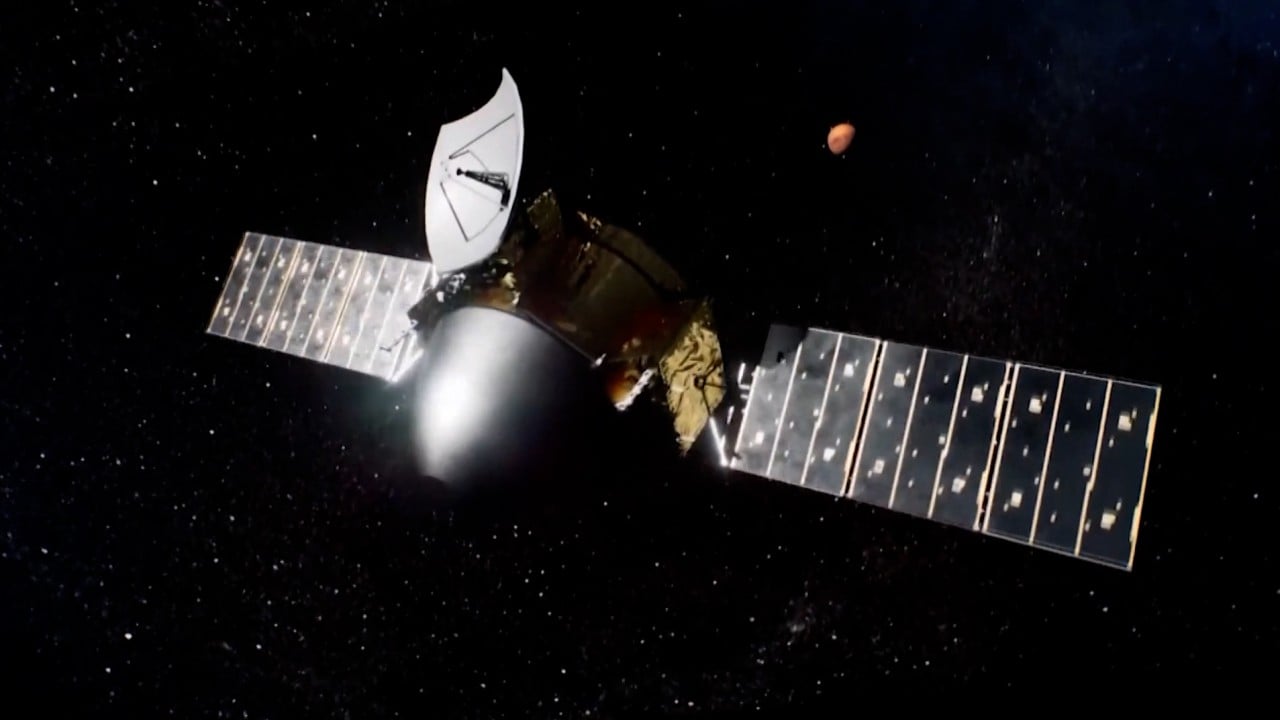
US-China tech war: the world’s two largest economies are ‘most significant rivals’ in space by 2040, new report says
- Space is increasingly in the cross-hairs of US officials as China pushes ahead with its own plans for stations in Earth’s orbit and around the moon.
- The US Space Force (USSF) is now one of the United States’ eight uniformed services and the world’s first and currently only independent military branch.
The United States’ National Intelligence Council (NIC), an intra-governmental think tank, said China will be “the most significant rival” in space by 2040, an area the US government has already highlighted as strategic for continuing national security, according to a report released on Tuesday.
The Global Trends 2040 report, produced for the incoming president every four years since 1997, identifies forces that will likely “shape the national security environment” for the US in the next 20 years, according to the NIC.
Dedicating a whole chapter to technology, the Global Trends 2040 report highlights the “race for technological dominance” that is “particularly associated with China’s rise”, including artificial intelligence (AI), smart manufacturing, biotechnology, and space.
By 2040, the report predicts that China’s efforts in expanding its presence outside the Earth’s atmosphere will be independent from the US and Europe, creating its own set of alliances with countries participating in China-led space activities.

A joke for many when it was first announced by Donald Trump in 2019, the US Space Force (USSF) is now one of the United States’ eight uniformed services and the world’s first and currently only independent military branch.
Before leaving office, the Trump administration made the USSF the 18th member of the US intelligence community, which already includes the CIA, FBI and the National Security Agency (NSA).
As China pushes ahead with its ambitious space program that seeks to finish building a permanent space station by 2022 and a lunar station by 2045, US officials have been repeatedly sounding the alarms of China’s threat in space.
In January, US Defence Secretary Lloyd Austin called space a “war-fighting domain”, and China a “pacing threat.” Last year, US Space Force General John Raymond also called for the US to work more closely with allies, to “stay ahead of the growing threat” from China.
“The US is currently experiencing really impressive innovation in the [space] sector, but a lot of the most impressive things are being done by companies that may not have as much loyalty to the US government as, for example, [China Aerospace Science and Technology Corporation] does to the Chinese government,” said Blaine Curcio, founder of Hong Kong-based Orbital Gateway Consulting.
China is on track for the construction of its space station, set to launch the core module within the first half of this year, according to Xinhua. Last year, China completed a lunar sample return mission, becoming the third country in the world to do so. It also launched a Mars probe in July, which entered Mars orbit in February this year.
Some in China, however, think that the US focus on competition in space is just another way to exaggerate the threat of China.
“America’s goal is world domination. Ours is self-reliance,” said Lan Tianyi, founder and CEO of Beijing-based space consultancy Ultimate Blue Nebula. “This is all just a reminder to Congress to throw more money at space.”


